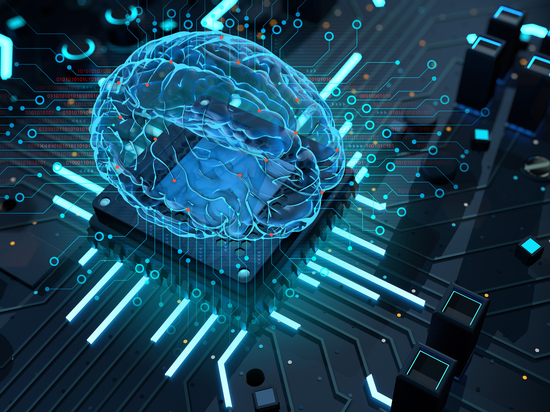
#Industry News
WHY MICROSOFT, AMAZON, AND ORACLE ARE INVESTING IN HEALTHCARE VOICE RECOGNITION
Companies look to fight provider burnout with ambient medical transcription
Why was database titan Oracle interested in EMR giant Cerner? The question was on every financial analyst’s mind last year. Interest for answers intensified when Oracle paid $28.3 billion for Cerner shortly afterwards. This time, analysts may finally have an answer.
Slowing the Burnout
Voice recognition software was mentioned multiple times in Oracle’s press release. Heavily used in the healthcare industry, it is considered one major technological solution to the ongoing problem of clinician burnout:
47 percent of all physicians felt burned out in a 2021 Medscape report.
60 percent agreed that “too many bureaucratic tasks” was the number one cause of their burnout in a 2019 Medscape survey..
By 2025, the US will suffer a shortfall of up to 90,000 clinicians reports the American Medical Association.
In the post, Personalization Could Be The Key To Ending EHR Physician Burnout, we touched upon other tech solutions like use of RFID login and even larger medical monitors. Voice recognition technology is different because it deals directly with clinical documentation, which many clinicians cite is the source for most of their burnout. To understand, here’s a typical day from the eyes of a primary care physician:
Enter select patient’s information into the EMR. This is usually done as the clinician sees the patient. Many patients find this irritating and complain that the doctor seems more focused on their computer than them.
After the patient leaves, the clinician makes notations for themselves for the SOAP note (see below) as well as check any missed fields in the EMR. Usually this is clicked or typed though some systems use speech recognition (for commands) and voice-to-text.
Review lab results of prior and current patients and update their records.
Return phone calls from patients, other clinicians, departments, etc., and update their records.
Reply to emails from patients, other clinicians, departments, etc., and update their records.
Review the next patient’s record before appointment.
Repeat the steps above for the next 25-30 patients.
After seeing the last patient of the night, the clinician goes over that day’s records to make sure all appropriate EMR fields are filled. Billing, especially, is important since most medical groups have eliminated billing personnel.
Dictate the patient’s Subjective, Objective, Assessment and Plan (SOAP) into the EMR based on earlier notes made that day. Simply, this is a summary of the patient’s visit, findings, and treatment.
Correct any errors made by the dictation software. On average, there is a 7.4 percent error per record, with 5.7 percent considered “clinically significant.” Transcriptionist personnel used to handle such duties but have been eliminated in most medical groups.
Approve the medical record.
Repeat the steps above for the next 25-30 patient records.
Note the above steps don’t include reviewing and approving the records and documents made by physician assistants and nurse practitioners. Many clinicians also have a backlog of records to go over as well.
On average, it takes an experienced clinician familiar with the healthcare group’s EHR between 5-15 minutes to review and approve a medical record. That’s a minimum of 2½ hours spent per day in front of the screen. This is carved out of time seeing a patient or, most often after hours and even weekends (called “pajama time”). That time is unpaid.
All this record-keeping affects the clinician’s physical, emotional, and social well-being which leads to burnout and an exodus from medicine.
Stepping Up with Ambient Medical Transcription
The example above shows many clinicians use voice recognition to dictate notes on the fly, navigate the EMR, and transcribe the all-important SOAP notes. This is because it’s faster to speak than to type. Unfortunately, clinicians still have to gather all those bits and pieces and update them into the EMR. As mentioned previously, this is done by many at the end of their shift and during the weekends when their memories may not be the best.
So, software companies are introducing a form of voice recognition called ambient medical transcription (also called ambient clinical intelligence and ambient speech technology). This version pairs the technology with artificial intelligence (AI), natural language processing (NPL), and machine learning (ML) to automate much of the record-keeping process. A major way it does this is by creating the patient’s EMR and the clinician’s SOAP note in real time, drastically cutting down documentation.
Microsoft and Amazon have demo video programs boasting this technology. In a nutshell, ambient medical transcription works in the following manner:
The clinician exams the patient. In the background, the ambient medical transcription NPL software transcribes everyone’s speech patterns. This has the added advantage that the doctor can fully focus on the patient.
The AI sorts through the information for relevant bits like what patient conditions are billable. Depending on the program’s level of sophistication, clinicians can tell it to submit the medications discussed during the exam to the patient’s pharmacy. Or even schedule another appointment.
After seeing the last patient of the evening, the clinician goes over that day’s records on their PC or medical tablet. The ambient clinical intelligence has already determined and sorted all relevant information from the transcription. Upon approval, that information is inserted in the appropriate fields and sections in the EMR.
A draft for the SOAP has been created by the software from that same transcription. The clinician reviews it for accuracy, making edits as necessary before approving it.
The program’s ML algorithms help it figure out the clinician’s workflow which means greater accuracy in the future and less time spent in record keeping.
Still In the Works
As you can see, ambient clinical intelligence can cut down a healthcare provider’s paperwork time considerably. Clinicians in several medical groups using Microsoft’s version of the technology state it has cut their documentation by up to 50 percent.
Right now, the technology is still in development. Many of the problems found in voice recognition like sorting through multiple speakers and dealing with accents carry over with ambient medical transcription.
Another issue: the program may not pull out important information from the transcription or, worse, insert non-existing bits called “hallucinations.”
Finally, each one also needs to be customized for the almost dizzying number of medical specialties and their terminologies (“average patient temperature” means very different figures to pediatricians and geriatricians).
At the time of this writing, notes created by ambient speech technology are vetted by human reviewers before being submitted into an EMR.
Voice Recognition’s Promise
Despite these current shortcomings, the healthcare industry sees the potential of ambient medical recognition. The medical transcription software market alone is huge, valued at 1.32 billion dollars in 2019. That figure is expected to climb to 4.89 billion by 2027.
As mentioned earlier, Microsoft is a major player in the field. This is especially true after its purchase of software company Nuance last year for 19.7 billion. A pioneer in speech recognition and artificial intelligence (AI) technology, Nuance’s Dragon Speech technology is used by 55 percent of physicians in the US and is found in over 10,000 healthcare organizations across the globe. Amazon is also invested in voice recognition with its Amazon Transcribe Medical and Comprehend Medical software platform. Oracle now looks to be the latest major player with its acquisition of Cerner.
Closing Thoughts
Clinician burnout is a major concern among healthcare groups. They are turning to technology to slow it down or better yet, stop it. Ambient intelligent transcription, an offshoot of voice recognition, hopes to do so by automating much of the clinician’s documentation.
Contact an expert at Cybernet if you’re interested in learning more about this cutting-edge technology and to see if it’s the solution for your healthcare group.







